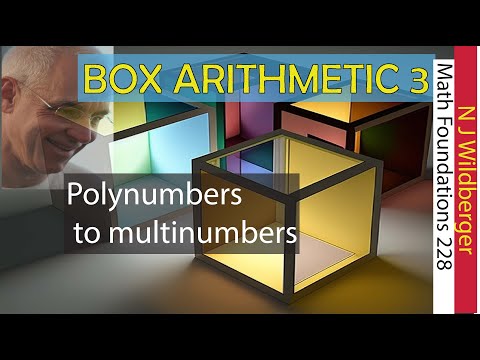Description:
Explore the concept of multinumbers in this 35-minute mathematics lecture. Delve into a new arithmetic system based on multisets, expanding from polynumbers to multinumbers. Learn about pure msets, their operations, and modified polynumber notation. Discover the first multinumber that is not a polynumber and practice basic arithmetic with polynumbers. Investigate more complex multinumbers and their arithmetic examples. Extend polynomial algebra to bi-polynomial algebra using variables α0, α1, α2, and create a tight framework for algebra. This lecture provides a foundation for understanding a more flexible and expansive approach to arithmetic, with potential applications in computer science.

The Big Step from Polynumbers to Multinumbers - Math Foundations - N J Wildberger
Add to list